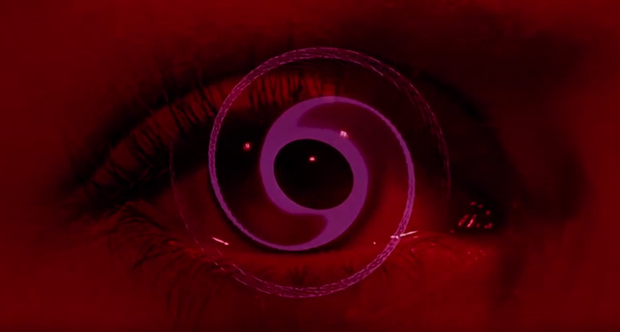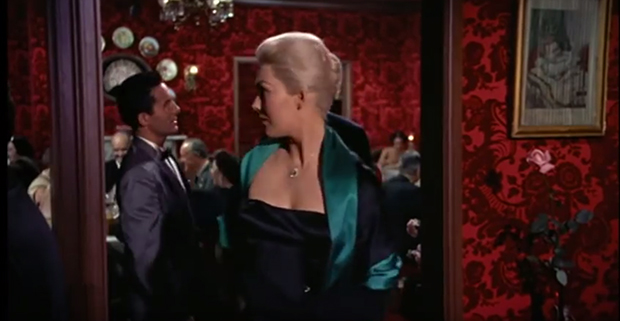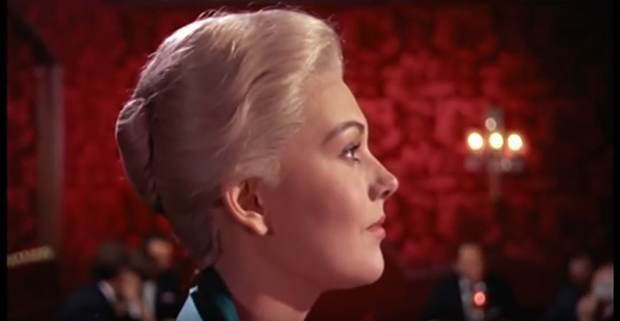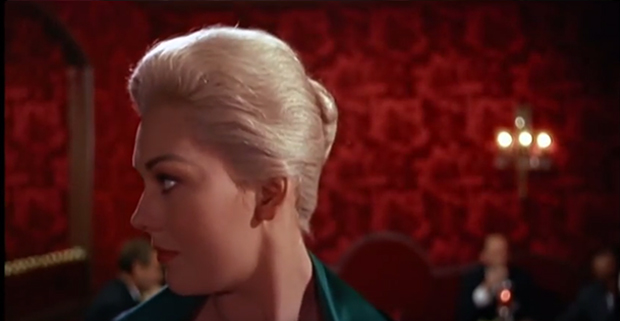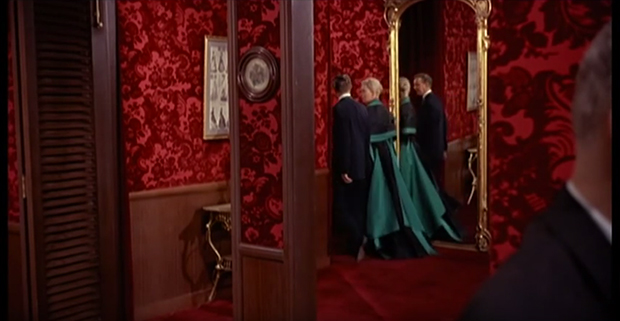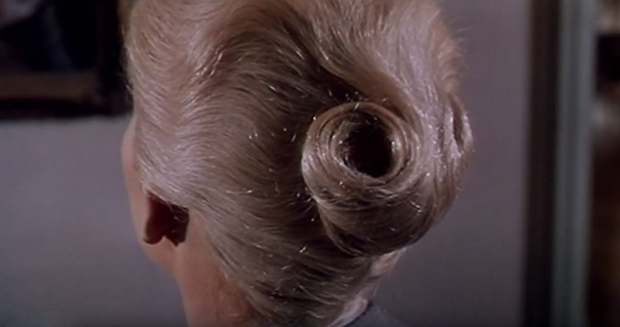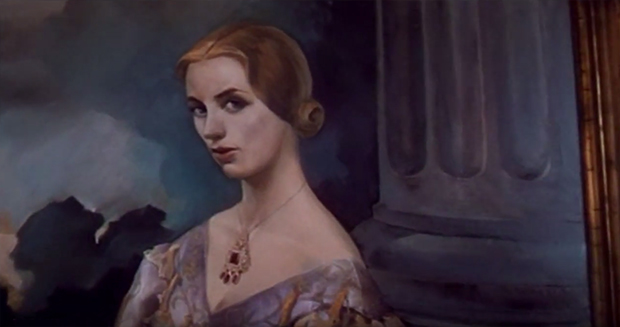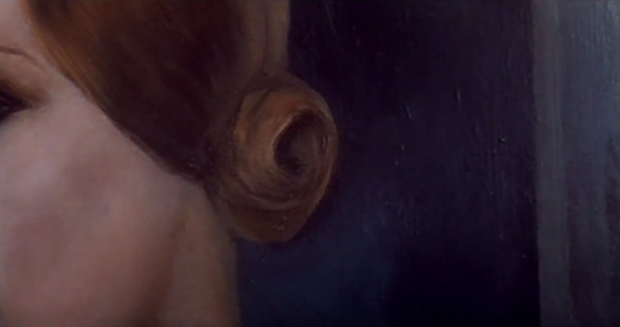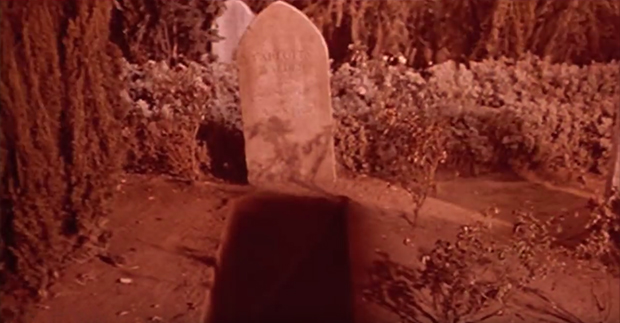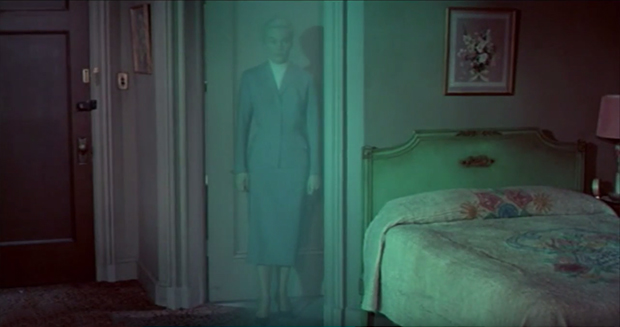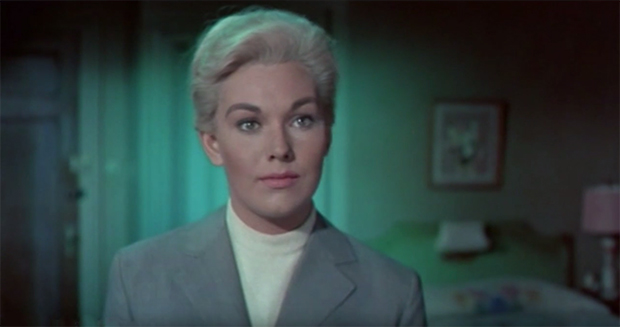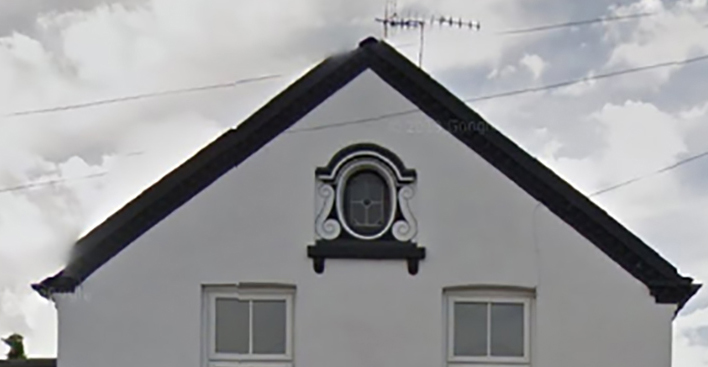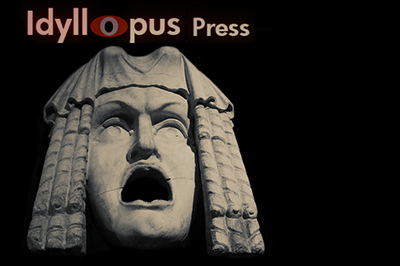Kubrick's Lolita and Hitchcock's Vertigo
with a touch of The Shining
Go to TOC for this film ( (which has also a statement on purpose and manner of analysis and a disclaimer as to caveat emptor and my knowing anything authoritatively, which I do not, but I do try to not know earnestly, with some discretion, and considerable thought).
It has struck me how much, in the telephone booth scene, Lolita resembles Kim Novak in Vertigo.
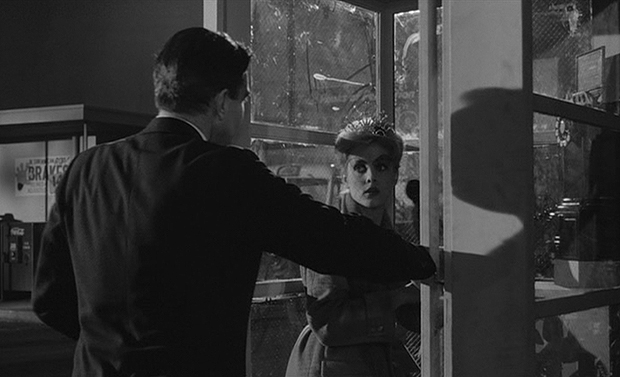
And there are actually several comparisons to be made between Lolita and Vertigo.
In Vertigo, Scotty, a detective, has a fear of heights due to an accident we see at the beginning of the film in which a policeman lost his life trying to save Scotty who, chasing a criminal, ended up hanging from the roof of a building. An absolutely insane plot has Gavin, a man who wishes to kill his wife, Madeleine, enlist his mistress, Judy, to impersonate her, pretending as well that she believes she is the reincarnation of Carlotta, Madeleine's great-grandmother. Scotty is hired by the husband to follow this fake Madeleine, with whom he falls in love. One day they go to the Mission where the great-grandmother had lived, and Madeleine/Judy runs up the stairs to the bell tower, from which she appears to leap to her death. Scotty, who was unable to follow her up the stairs, because of his vertigo, is traumatized. Blaming himself, he is hospitalized. When he gets out he stumbles upon Judy. Captivated by her resemblance to the woman who he believed committed suicide, Scotty reincarnates in her Madeleine. But then Judy accidentally wears a necklace that discloses who she is. Returning to the Mission with her, Scotty presses out of Judy the confession that Madeleine hadn't committed suicide, that she had impersonated her, and that when she ran up the bell tower Gavin was there and threw his dead wife's body off it, making it appear Madeleine had been unstable and committed suicide. Scotty had been hired to follow her as it was known that because of his vertigo he'd be unable to ascend the stairs to the top of the bell tower and stop the seeming suicide of which he would be a witness. Having told this tale when standing in the bell tower with Scotty, Judy is surprised by the sudden appearance of a nun and falls out the window. So, Judy, who had impersonated a death, dies anyway, as if it is fated.
That's bozo. It is, like I said, an insane plot. And yet it is a great movie about Scotty's obsession with Madeleine and his emotional abuse of Judy in his insisting she become another woman. When he does this, he has as yet no idea that Judy had impersonated Madeleine, so there is no excuse for his manipulating her in order to get at the truth.
Scotty follows Madeleine/Judy at one point to a museum where she sits for a long while staring at a portrait. It turns out to be of Carlotta, the woman of whom she believes to be a reincarnation, but Madeleine/Judy doesn't claim to remember such episodes.
Was Carlotta's portrait an influence on Kubrick's use of George Romney's portrait of a young woman (previously observed in another James Mason film), behind which Quilty takes cover and through which Humbert finishes shooting him to death? However, I do believe the use of the portrait has also been influenced by the movies La Chienne and Scarlet Street. I cover this at quite some length in the post Portrait of Lolita, An Analysis of the Shooting of the George Romney Painting.
If you're an aficionado of Kubrick and Hitchcock, you are probably expecting me to primarily focus on Judy's full transformation into Madeleine in the neon green haze of the lights of the hotel where she boards, but where I'd like to focus my comparison in this post is on Hitchcock's emphasis on Madeleine's hair style, that Scotty was so adamant on duplicating even after he had Judy attired as Madeleine, what it means, and how Kubrick has copied it for use on Lolita. The hairstyle is one in which the hair forms two reasonably symmetrical buns. With Lolita, below, these buns are in disarray but are obviously present when she meets with Humbert again, requesting his financial help after having married and become pregnant.
It is this hairstyle that grabs my attention.
Lolita doesn't wear this hairstyle in any other portion of the film. Usually her hair is down, and the couple of times it is up it is styled in what I believe was called a French Twist. These symmetrical opposing buns are reserved for her older incarnation. When she was a child, Humbert saw her as a resurrection of Annabel. As a quasi adult, she is removed from the child that she was, removed from Annabel, but Humbert sees enough in the person she has become that for him the Lolita he brutalized as a child is still there. In the book, he's also surprised to see a touch of the ghost of Charlotte in her as well. Humbert reasons that he must love Lolita for who she is, otherwise he would be utterly repulsed by her as an adult. It's up to the viewer to decide if this is true--though it makes no difference considering their history. He does not apologize, he is accusatory of her for having left him, acts injured when she doesn't count him among her lovers, and he even tries to take her away from her new life, her husband, pleading with her they belong together because of their shared history and that her husband is only an accident..
Hitchcock's opening credits for Vertigo include zooming in on an unknown woman's eye, over which a counter-clockwise rotating spiral appears. This is supposedly intended to suggest Scotty's vertigo and fear of heights. The spiral morphs into various revolving shapes, including two interlocked circles.
The credits end with the camera zooming out, having returned to the spiral rotating over the woman's eye, the figure now yellow.
Scotty makes a big deal about Judy reduplicating Madeleine's hairstye, but there is more to this than it seems. Several times, Hitchcock points out to the viewer the significance of her hairstyle. When Scotty sees Madeleine in a restaurant, Hitchcock shows us her in left profile, then several times in right profile, then in left profile again.
What you are made to notice, though it's not very clear in these screengrabs in which I focus on the profile, is that Madeleine's hairstyle is formed of two symmetrical, mirroring buns, one running clockwise and the other counter-clockwise. As Madeleine leaves the restaurant, Hitchcock expresses this again by virtue of the mirror, so we see Madeleine's left side and her right side reflected in the mirror.
When Scotty follows Madeleine to the museum where she stares at the painting, we are afforded a very clear view of her hairstyle from the rear, so that we better see at least one of these buns, and how she has two of them. Scotty then notices how the hairstyle of the woman in the painting shows a circular bun at the nape of her neck. Though we see in the twist a visual metaphor for Scotty's vertigo, the fact that the two women have the same hairstyle is intended to communicate to us that Carlotta has been reincarnated in Madeleine.
While hospitalized, after pseudo-Madeleine falls to her death, Scotty has a nightmare. In his dream, we see the woman upon whom the painting is based. Hitchcock shows her posed as in the painting, the bun on her left toward us, then she rotates toward Scotty and we see that her hairstyle also has a paired, opposing bun on the right, like Madeleine's. Scotty then sees her grave, Hitchcock zooms into its darkness, and Scotty falls down through the dark.
This is a turning point in the film. There is no "other side" of the woman to be seen in the painting. That the woman has two buns, like Madeleine, has not been seen by Scotty. It's in the dream that she turns toward him and presents this mirror side of herself to him. The significance of Carlotta turning toward him would not be so great if she isn't first seen in the dream posed exactly as in the painting. And it is after this, after Carlotta turns to him, showing her mirror side, that Scotty finds Judy, who is like Madeleine but is not. Who has in her a faint deja vu perfume of Madeleine.
Judy pleads with Scotty to love her as she is. But he remakes her and is rewarded with the ghost of Madeleine.
It is this green ghost of Madeleine that reminds some individuals of Jack's encounter with the young woman who transforms into the corpose of an old woman in the green bathroom in The Shining. Kubrick may have been influenced by Hitchcock, and I do see Kubrick also having been perhaps influenced by Hitchcock in other ways. But the green that Kubrick uses in The Shining I tend to associate more with the phantom green in Gluck's 1969 Traumnovelle. Who knows? Green has long been used in association with the paranormal.
So, as concerns Kubrick, the green ghost of Madeleine is not what grabbed me, but the doubling of the women in their resemblance of another, and the symmetry and style of Lolita's bun hairstyle and how it was like Madeleine's, the manner in which Hitchcock had as a turning point in the film the scene in which Carlotta revolved toward Scotty in the dream, revealing her other side, after which he met Judy who he would remake as Madeleine. I was impressed by this because has doubles and mirrorings throughout his work. His films have, as well, a kind of dividing line in them, best exemplified by a flip horizontal landscape used with the monolith in 2001 and how this relates to the symmetry displayed by the monolith at film's end, Bowman passing into the "between" of the monolith with his rebirth. Another example is the world maze in The Shining and what it means relative The Overlook being positioned on what happens to be the Continental Divide. I would imagine that Kubrick saw something of this in Madeleine's hairstyle, and appreciated how Hitchcock used it in respect of Madeleine, and Judy who was in effect conjured by Carlotta's turning her flip side to Scotty and revealing it to him.
Hitchcock, with the relationship of Scotty and Judy, employees deja vu, but with Scotty's dream, one wonders too if that was intended to represent that deep down Scotty understood how he had been duped, that he unconsciously comprehended Madeleine had been a fake. And yet his Judy was indeed to be a revitalization of the Madeleine he had known and would fall to her death, fated to have the same end as Madeleine, the woman she had impersonated.
Or the true ghostliness of the matter may be Carlotta appearing to Scotty in a dream and revealing the doubling to him.
Where was Carlotta buried? At the Mission Dolores Cemetery behind the Mission Dolores Church. As Lolita was a nickname to her given name of Dolores, Kubrick must have taken this into consideration as well when styling Lolita's hair to be a variation on the double loop that Carlotta and Madeleine wore.
If we examine the house where Lolita is found living with her new husband, we may see perhaps in an upper floor window a reason for Kubrick's electing this to be their home.
To left and right of the window is scrollwork that reminds of Lolita's hairstyle that may be based on Carlotta's and Madeleine's.
Approx 2100 words or 5 single-spaced pages. A 16 minute read at 130 wpm.
Go to Table of Contents of the analysis (with supplemental posts)
Link to the main TOC page for all the analyses


